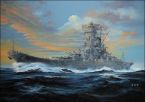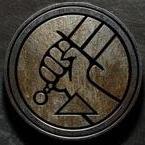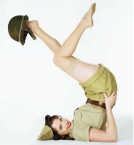Howard Mitchell
Posts: 449
Joined: 6/3/2002
From: Blighty
Status: offline

|
quote:
ORIGINAL: Apollo11
Also, how much weight would proper armor for pilot and other vital parts of Japanese aircraft add?
How much would self-sealing gasoline tanks weight?
How much aircraft performance would suffer because of that?
Would center of mass shift so much to alter the aircraft behavior?
Would more powerful engines be needed or range would be sacrificed instead?
A report compiled by Commander Sheldon Brown, USN, in October 1945 from an interview with Japanese Army research metallurgist Major Koinumaru gave the following:
Ki-43 Hayabusa (Oscar)
Behind pilot’s head – 16mm
Behind pilot’s body – 16mm
Approximate weight of armour – 40 kg
Ki-44 Shoki (Tojo)
Behind pilot’s head – 16mm
Behind pilot’s body – 16mm
Approximate weight of armour – 40 kg
Ki-84 Hayate (Frank)
Behind pilot’s head – 8mm
Behind pilot’s body – 16mm
Approximate weight of armour – 40 kg
The Japanese had investigated double or triple layers of armour with the optimum distance between being equal to two bullet lengths and the Ki-84’s armour appears to have been an example of this; all the other where one single sheet. The table in Brown’s document does not state the exact model of aircraft but they were presumably late-war versions. Other sources give 13mm pilot armour for the Ki-84, and it had a 65mm thick armoured glass windscreen and self-sealing tanks.
No use was made of deflector plates as in American and British aircraft. In comparison, a Spitfire V in 1942 had:
6mm steel armour behind the pilot’s head and knees, front header tank and in front of the magazines in the wings
4mm steel armour on the front fuel tank, base of windscreen and back seat
10 swg alcad deflector plates on the top and side of the fuel tanks and the top and bottom of the magazines
8 swg dural deflector on the bottom of the pilot’s seat
41mm armoured windscreen
Self-sealing fuel tanks
Unfortunately I don’t have a weight for all of this, but it shows how deflection armour was built in to the design.
Looking at American aircraft, the P-40E had two pieces of armour, one forward and one behind the pilot, the front one 10mm and the back 8mm. They totalled 111 pounds. On the P-40F armour weighed 149 lbs, on the P-40K 136 lbs, and on the P-40N 130 lbs. Armour was therefore between 50 and 68 Kg
The F-4U had a 25 lb cowl deck to deflect gunfire with was 3mm thick. 53 lb armour protected the pilot from behind. The huge R-2800 engine was considered armour enough against frontal fire together with an armoured windscreen. Total armour was therefore around 35 Kg. The self-sealing tanks cost an extra 177 lbs (80Kg).
Performance was certainly reduced by armour, but it would depend on the amount carried, the overall weight of the aircraft, and the engine power available, so it is difficult to make general statements. Weight allocated to armour could not be used for fuel or bombs and so range and payload would also suffer (this was the reason why RAF Bomber Command resisted attempts to equip it with heavily armoured aircraft such as the armoured Lancaster proposed in June 1941).
_____________________________
While the battles the British fight may differ in the widest possible ways, they invariably have two common characteristics – they are always fought uphill and always at the junction of two or more map sheets.
General Sir William Slim
|
 Printable Version
Printable Version





















 New Messages
New Messages No New Messages
No New Messages Hot Topic w/ New Messages
Hot Topic w/ New Messages Hot Topic w/o New Messages
Hot Topic w/o New Messages Locked w/ New Messages
Locked w/ New Messages Locked w/o New Messages
Locked w/o New Messages Post New Thread
Post New Thread